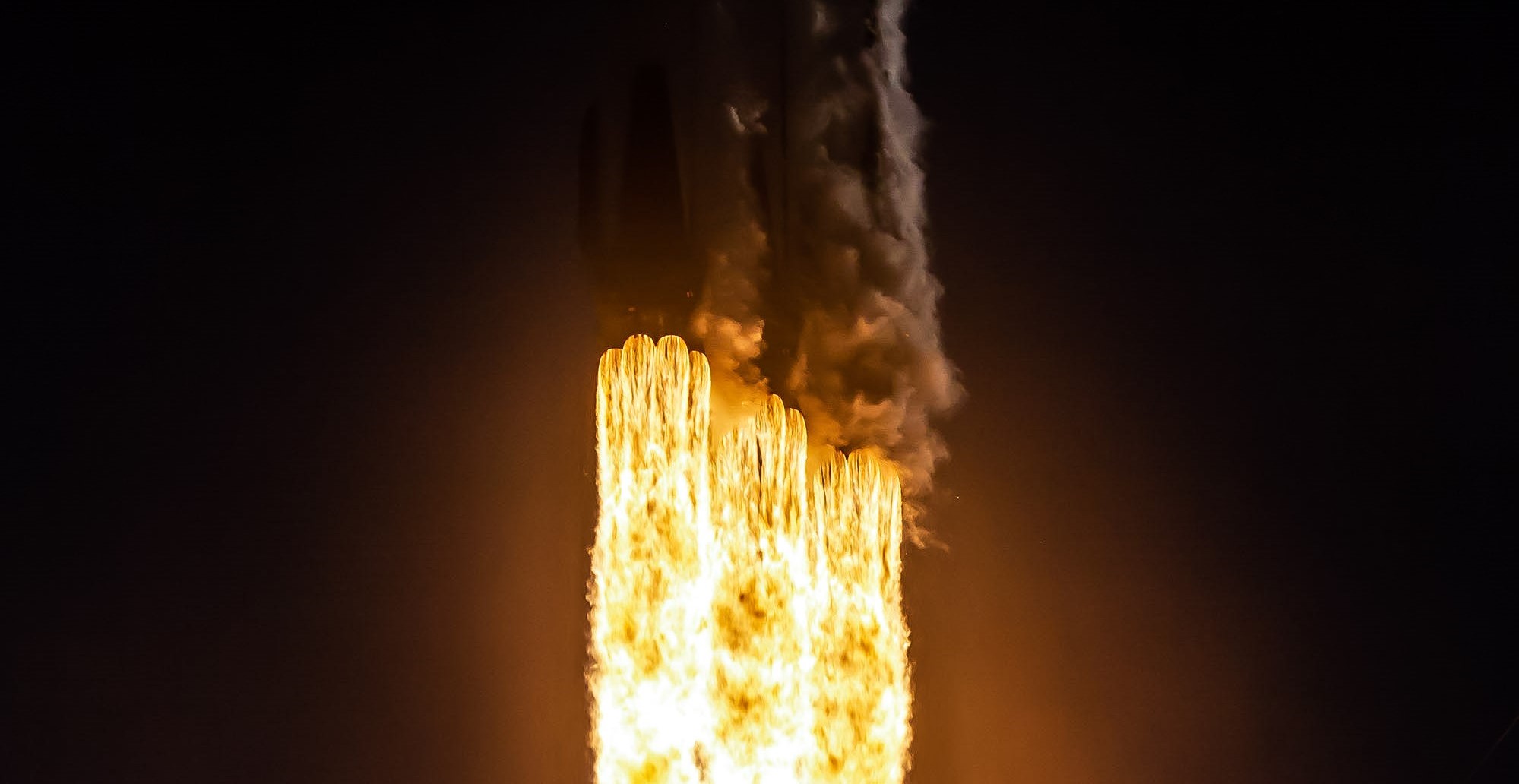

News
SpaceX’s Falcon Heavy rocket could launch a NASA space station to the Moon
According to NASA, a SpaceX Falcon Heavy rocket (or another commercial heavy-lift launch vehicle) could potentially launch the bulk of a new Moon-orbiting space station in a single go, saving money and reducing risk.
Known as the Gateway, NASA is working to build a tiny space station in an exotic and odd orbit around the Moon. Lacking any clear and pressing purpose, NASA and the Gateway’s proponents have argued that it could serve as a testbed for interplanetary missions, allowing the space agency to figure out how to keep astronauts alive and healthy in deep space. Later, it was proposed as a sort of unwieldy orbital tug and home base for crewed Moon landers, although the Gateway appears to have recently been removed from any plans for mid-2020s Moon landings.
Most likely, the station is being built in order to give NASA’s wildly over-budget, behind-schedule Orion spacecraft and SLS rocket some kind of destination worthy of their gobsmacking $2-3 billion launch cost and $35-40 billion development cost. Regardless, a space station orbiting the Moon – while lacking a clear and present scientific or exploratory reason for its existence – is undeniably cool and exciting and will indeed need to be launched into cislunar space. Previously planned to launch as separate modules that would then rendezvous and dock in at the Moon, NASA has recently decided to switch gears.
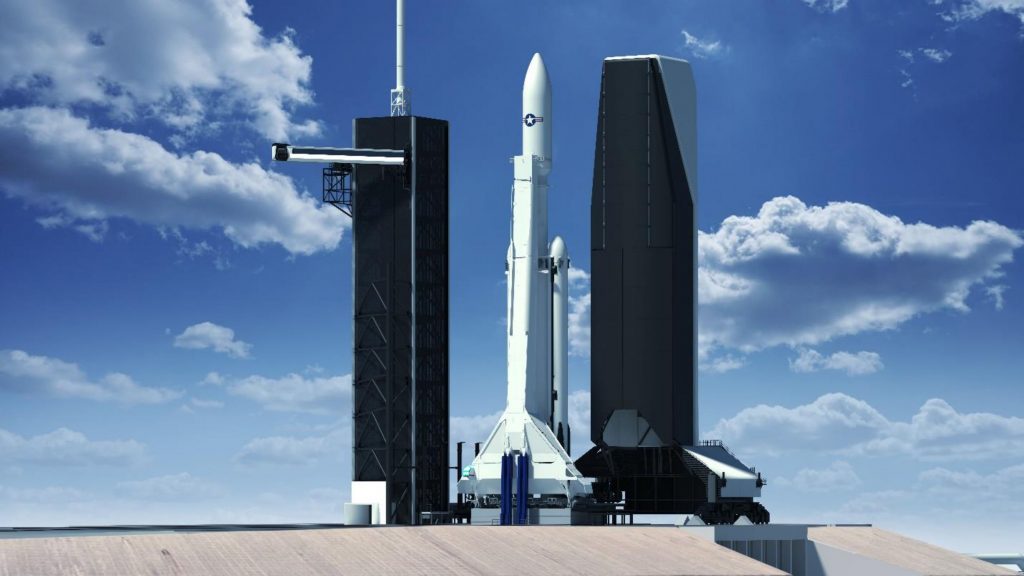
As of May 2020, NASA has awarded three critical hardware contracts for Gateway. In 2019, the space agency awarded contracts to Maxar and Northrop Grumman to build the Power and Propulsion Element (PPE) and Habitation and Logistics Outpost (HALO), respectively. As the name suggests, the PPE will feature an exceptionally large ~50 kW solar array and the most powerful electric thrusters ever flown in space, thus supplying Gateway with electricity and propulsion. HALO is a miniscule habitat module also responsible for life support and providing all other basic necessities for astronauts to live in space, all of which will leave a tiny amount of actual habitable volume for those astronauts to live in.
Most recently, NASA also awarded SpaceX a contract to develop a new Dragon XL spacecraft that will launch on Falcon Heavy and autonomously resupply the lunar space station at least twice, should Gateway actually make it to launch.
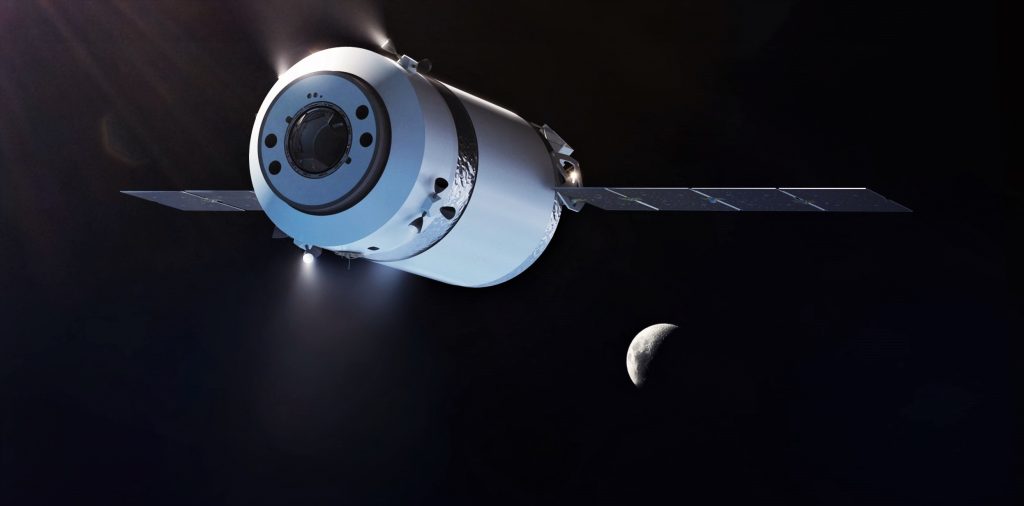
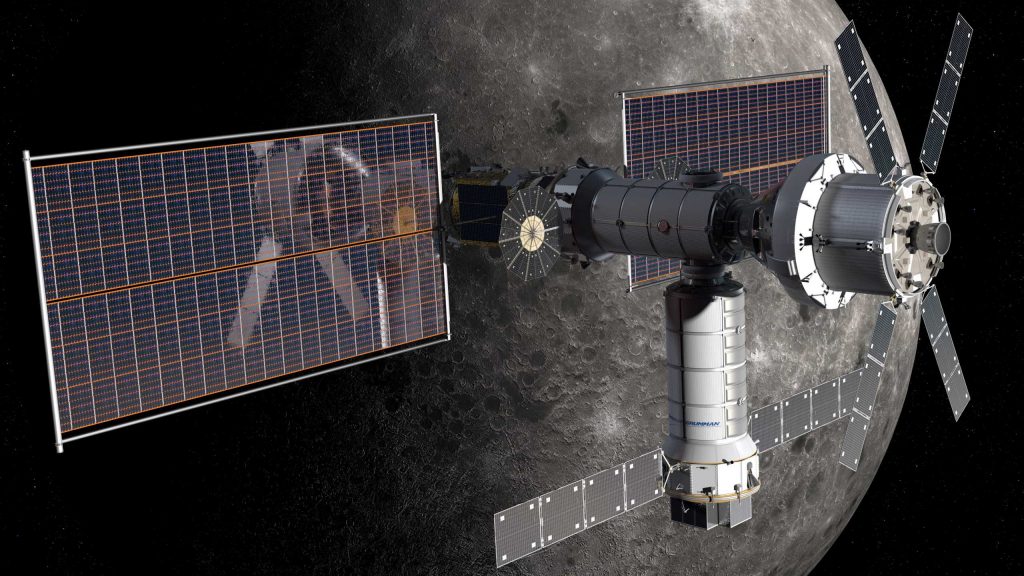
The notional plan is to eventually expand the habitable volume of the station from living in a large SUV to something more like a small studio apartment, a bit less than a third as large as the International Space Station (ISS) in a best-case scenario. The ISS is designed to support at least six astronauts simultaneously and has done so for almost two decades, albeit only with the help of resupply missions launched from Earth every 2-3 months. Indeed, the plan is to send up to four astronauts to the Gateway for no more than 90 days a year.
Two birds, one stone; two eggs, one basket
Originally, NASA wanted to launch the PPE and HALO modules – together representing the absolute bare minimum needed to build a functional Gateway – on separate commercial rockets in 2022 and 2023, respectively. Now, according to NASA associate administrator Doug Loverro, the space agency has made the decision to launch both modules simultaneously on the same commercial rocket.
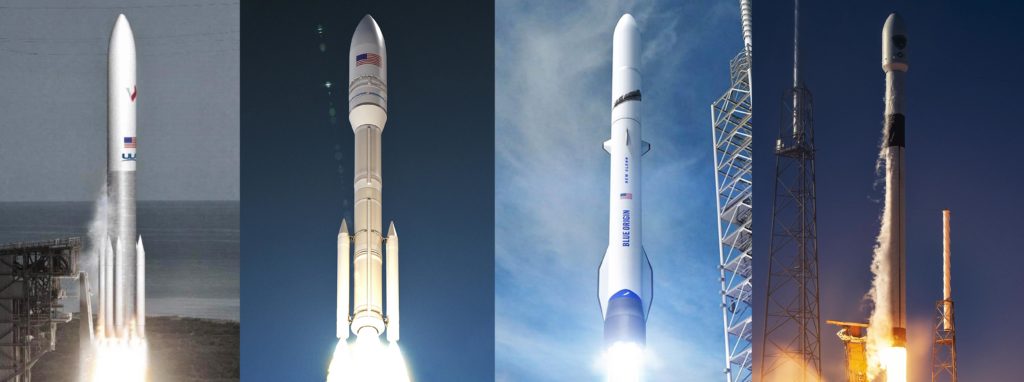
This decision was made in large part because it makes sense from a technical simplicity and overall efficiency standpoint but also because several commercial launch vehicles – either currently operational or soon to be – are set to debut extremely large payload fairings. As a combined payload, the Gateway PPE and HALO modules would be too big for just about any existing launch vehicle, while the tiny handful it might fit in lack the performance needed to send such a heavy payload to the Moon.
Falcon Heavy apparently has the performance needed, as NASA used the rocket and a new stretched fairing developed by SpaceX for military customers as a baseline to determine whether PPE and HALO could launch together. Given that NASA could have technically used any of the vehicles expected to have large payload fairings for that analysis, the explicit use and mention of Falcon Heavy rather strongly suggests that the SpaceX rocket is a front runner for the new combined launch contract. This isn’t exactly surprising, given that the massive rocket has already completed three successful launches and will attempt at least another four missions between now and 2023.
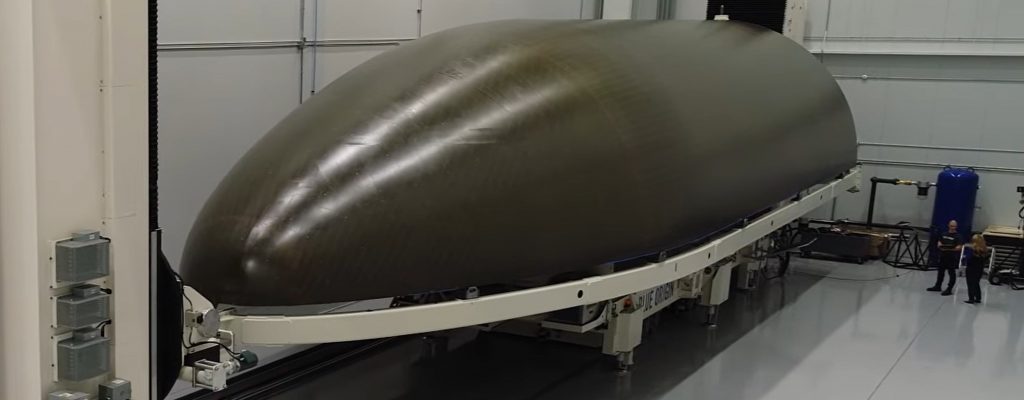
Of the other launch vehicles expected to feature large fairings capable of supporting the combined PPE/HALO payload, ULA’s Vulcan Centaur rocket is scheduled to launch for the first time in July 2021, while Blue Origin’s New Glenn is unlikely to launch before late 2021. Northrop Grumman is also developing the Omega rocket with a large fairing, although it’s unlikely to have the performance needed for the unique Gateway payload. As such, by 2023, Falcon Heavy will almost certainly have a record of launches well out of reach of other prospective PPE/HALO launch competitors. For obvious reasons, putting both modules of a space station on a single launch raises the stakes, making it more critical than ever than risk be reduced where it can be – especially important for launch operations.
Notionally including Gateway’s PPE and HALO, Falcon Heavy now has as many as nine launches on contract (or nearly so) over the next five or so years. It’s extraordinarily unlikely that any of Falcon Heavy’s prospective competitors will be able to get close to the SpaceX rocket’s flight history by 2023, effectively making Falcon Heavy the de facto choice for NASA from an apolitical, technical perspective.
News
Tesla begins Robotaxi certification push in Arizona: report
Tesla seems serious about expanding its Robotaxi service to several states in the coming months.

Tesla has initiated discussions with Arizona transportation regulators to certify its driverless Robotaxi service in the state, as per a recent report from Bloomberg News. The move follows Tesla’s launch of its Robotaxi pilot program in Austin, Texas, as well as CEO Elon Musk’s recent comments about the service’s expansion in the Bay Area.
The Arizona Department of Transportation confirmed to Bloomberg that Tesla has reached out to begin the certification process for autonomous ride-sharing operations in the state. While details remain limited, the outreach suggests that Tesla is serious about expanding its driverless Robotaxi service to several territories in the coming months.
The Arizona development comes as Tesla prepares to expand its service area in Austin this weekend, as per CEO Elon Musk in a post on X. Musk also stated that Tesla is targeting the San Francisco Bay Area as its next major market, with a potential launch “in a month or two,” pending regulatory approvals.
Tesla first launched its autonomous ride-hailing program on June 22 in Austin with a small fleet of Model Y vehicles, accompanied by a Tesla employee in the passenger seat to monitor safety. While still classified as a test, Musk has said the program will expand to about 1,000 vehicles in the coming months. Tesla will later upgrade its Robotaxi fleet with the Cyercab, a two-seater that is designed without a steering wheel.
Sightings of Cybercab castings around the Giga Texas complex suggests that Tesla may be ramping the initial trial production of the self-driving two-seater. Tesla, for its part, has noted in the past that volume production of the Cybercab is expected to start sometime next year.
In California, Tesla has already applied for a transportation charter-party carrier permit from the state’s Public Utilities Commission. The company is reportedly taking a phased approach to operating in California, with the Robotaxi service starting with pre-arranged rides for employees in vehicles with safety drivers.
News
Tesla sets November 6 date for 2025 Annual Shareholder Meeting
The automaker announced the date on Thursday in a Form 8-K.

Tesla has scheduled its 2025 annual shareholder meeting for November 6, addressing investor concerns that the company was nearing a legal deadline to hold the event.
The automaker announced the date on Thursday in a Form 8-K submitted to the United States Securities and Exchange Commission (SEC). The company also listed a new proposal submission deadline of July 31 for items to be included in the proxy statement.
Tesla’s announcement followed calls from a group of 27 shareholders, including the leaders of large public pension funds, which urged Tesla’s board to formally set the meeting date, as noted in a report from The Wall Street Journal.
The group noted that under Texas law, where Tesla is now incorporated, companies must hold annual meetings within 13 months of the last one if requested by shareholders. Tesla’s previous annual shareholder meeting was held on June 13, 2024, which placed the July 13 deadline in focus.
Tesla originally stated in its 2024 annual report that it would file its proxy statement by the end of April. However, an amended filing on April 30 indicated that the Board of Directors had not yet finalized a meeting date, at least at the time.
The April filing also confirmed that Tesla’s board had formed a special committee to evaluate certain matters related to CEO Elon Musk’s compensation plan. Musk’s CEO performance award remains at the center of a lengthy legal dispute in Delaware, Tesla’s former state of incorporation.
Due to the aftermath of Musk’s legal dispute about his compensation plan in Delaware, he has not been paid for his work at Tesla for several years. Musk, for his part, has noted that he is more concerned about his voting stake in Tesla than his actual salary.
At last year’s annual meeting, TSLA shareholders voted to reapprove Elon Musk’s compensation plan and ratified Tesla’s decision to relocate its legal domicile from Delaware to Texas.
Elon Musk
Grok coming to Tesla vehicles next week “at the latest:” Elon Musk
Grok’s rollout to Tesla vehicles is expected to begin next week at the latest.

Elon Musk announced on Thursday that Grok, the large language model developed by his startup xAI, will soon be available in Tesla vehicles. Grok’s rollout to Tesla vehicles is expected to begin next week at the latest, further deepening the ties between the two Elon Musk-led companies.
Tesla–xAI synergy
Musk confirmed the news on X shortly after livestreaming the release of Grok 4, xAI’s latest large language model. “Grok is coming to Tesla vehicles very soon. Next week at the latest,” Musk wrote in a post on social media platform X.
During the livestream, Musk and several members of the xAI team highlighted several upgrades to Grok 4’s voice capabilities and performance metrics, positioning the LLM as competitive with top-tier models from OpenAI and Google.
The in-vehicle integration of Grok marks a new chapter in Tesla’s AI development. While Tesla has long relied on in-house systems for autonomous driving and energy optimization, Grok’s integration would introduce conversational AI directly into its vehicles’ user experience. This integration could potentially improve customer interaction inside Tesla vehicles.
xAI and Tesla’s collaborative footprint
Grok’s upcoming rollout to Tesla vehicles adds to a growing business relationship between Tesla and xAI. Earlier this year, Tesla disclosed that it generated $198.3 million in revenue from commercial, consulting, and support agreements with xAI, as noted in a report from Bloomberg News. A large portion of that amount, however, came from the sale of Megapack energy storage systems to the artificial intelligence startup.
In July 2023, Musk polled X users about whether Tesla should invest $5 billion in xAI. While no formal investment has been made so far, 68% of poll participants voted yes, and Musk has since stated that the idea would be discussed with Tesla’s board.
-

 Elon Musk1 week ago
Elon Musk1 week agoTesla investors will be shocked by Jim Cramer’s latest assessment
-

 Elon Musk3 days ago
Elon Musk3 days agoElon Musk confirms Grok 4 launch on July 9 with livestream event
-

 Elon Musk14 hours ago
Elon Musk14 hours agoxAI launches Grok 4 with new $300/month SuperGrok Heavy subscription
-

 News7 days ago
News7 days agoTesla Model 3 ranks as the safest new car in Europe for 2025, per Euro NCAP tests
-

 Elon Musk2 weeks ago
Elon Musk2 weeks agoA Tesla just delivered itself to a customer autonomously, Elon Musk confirms
-

 Elon Musk1 week ago
Elon Musk1 week agoxAI’s Memphis data center receives air permit despite community criticism
-

 Elon Musk2 weeks ago
Elon Musk2 weeks agoTesla’s Omead Afshar, known as Elon Musk’s right-hand man, leaves company: reports
-

 News2 weeks ago
News2 weeks agoXiaomi CEO congratulates Tesla on first FSD delivery: “We have to continue learning!”

















